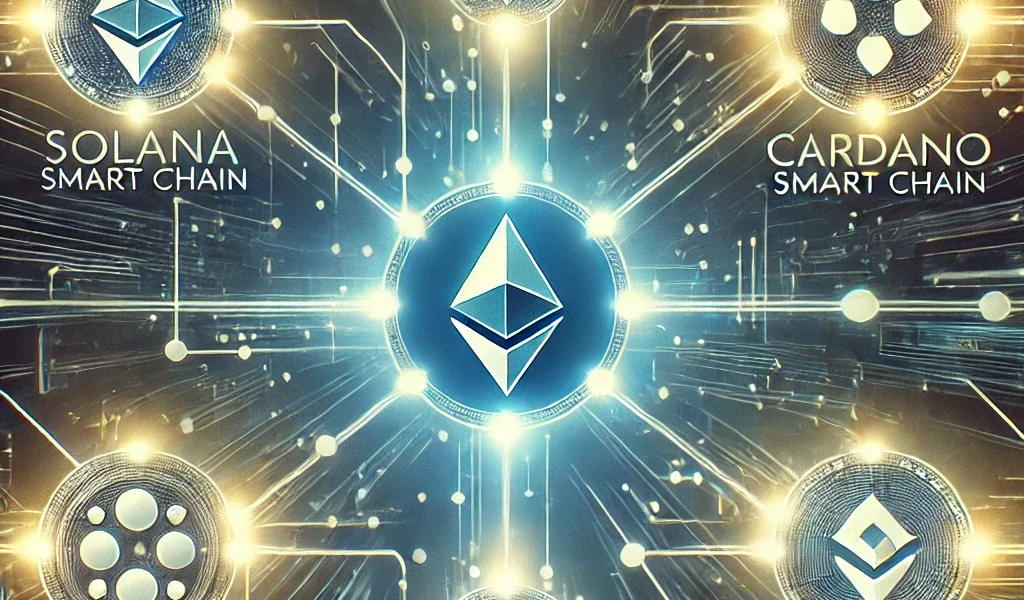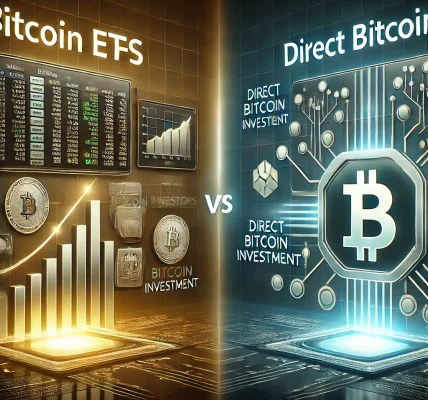Ethereum has long been the dominant force in the blockchain space, powering decentralized applications (dApps), smart contracts, and the DeFi ecosystem. However, with scalability challenges, high gas fees, and network congestion, several blockchain networks have emerged as strong competitors, offering faster transactions, lower fees, and innovative technologies.
In this blog, we will explore the top five blockchain networks competing with Ethereum in 2025, analyzing their features, advantages, and why they are gaining traction.
1. Binance Smart Chain (BSC)
Overview:
Binance Smart Chain (BSC) is a blockchain network developed by Binance, one of the world’s largest cryptocurrency exchanges. It offers smart contract functionality and is known for its low transaction fees and fast block times.
Key Features:
- High-speed transactions with 3-second block times.
- Lower fees compared to Ethereum, making it more accessible.
- Dual-chain architecture, allowing interoperability between Binance Chain and BSC.
- Broad adoption, supported by various DeFi projects, NFTs, and gaming platforms.
Why It Competes with Ethereum:
BSC provides a cheaper and faster alternative to Ethereum while maintaining compatibility with the Ethereum Virtual Machine (EVM). Developers can easily migrate Ethereum-based dApps to BSC with minimal changes.
2. Solana (SOL)
Overview:
Solana is known for its high-performance blockchain that can process thousands of transactions per second (TPS) with near-zero fees, making it a preferred choice for DeFi, NFTs, and gaming applications.
Key Features:
- Lightning-fast speeds, handling up to 65,000 TPS.
- Low transaction costs, often under a fraction of a cent.
- Proof-of-History (PoH) consensus mechanism, enhancing scalability.
- Robust ecosystem of dApps, DeFi platforms, and NFT marketplaces.
Why It Competes with Ethereum:
Ethereum struggles with scalability, but Solana’s high throughput and low costs make it an attractive alternative for developers and users looking for efficiency.
3. Cardano (ADA)
Overview:
Cardano is a research-driven blockchain developed to improve scalability, sustainability, and interoperability while maintaining a secure and decentralized environment.
Key Features:
- Ouroboros Proof-of-Stake (PoS) consensus for energy efficiency.
- Strong academic foundation, built on peer-reviewed research.
- Modular and scalable infrastructure.
- Interoperability-focused, aiming to connect multiple blockchains.
Why It Competes with Ethereum:
Cardano takes a scientific approach to blockchain development, ensuring stability and scalability while addressing some of Ethereum’s inefficiencies.
4. Avalanche (AVAX)
Overview:
Avalanche is a highly scalable blockchain network that supports custom blockchains, smart contracts, and DeFi applications with sub-second finality.
Key Features:
- Three interoperable blockchains (X-Chain, C-Chain, and P-Chain).
- Fast transaction finality, often under one second.
- EVM-compatible, allowing easy migration of Ethereum-based dApps.
- Scalable architecture, enabling thousands of validators.
Why It Competes with Ethereum:
Avalanche’s speed and scalability make it ideal for high-demand applications like DeFi and gaming, positioning it as a serious Ethereum competitor.
5. Polkadot (DOT)
Overview:
Polkadot is a unique blockchain that enables interoperability between multiple blockchain networks through its parachain structure.
Key Features:
- Parachain technology, allowing multiple blockchains to interact seamlessly.
- Shared security model, reducing resource consumption.
- Flexible governance, allowing upgrades without hard forks.
- Scalable infrastructure to support diverse applications.
Why It Competes with Ethereum:
Polkadot’s interoperability and scalability give it a competitive edge, making it a prime candidate for cross-chain applications and enterprise adoption.
Conclusion
While Ethereum remains a leading blockchain for smart contracts and dApps, networks like Binance Smart Chain, Solana, Cardano, Avalanche, and Polkadot offer faster speeds, lower fees, and enhanced scalability. Each of these blockchains has its strengths, making them viable alternatives for developers and users looking for better performance and reduced costs.
As blockchain technology evolves, Ethereum’s dominance may face increasing pressure from these rising networks. Whether you’re a developer, investor, or blockchain enthusiast, understanding these alternatives can help you navigate the future of decentralized applications and finance.




